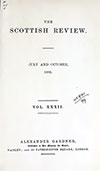

Ravenscraig Castle stands on a promontory on the outskirts of Kirkcaldy, overlooking stretches of beach from it’s raised position. It was planned by King James II – who had a great interest in artillery – to withstand cannon fire, and was possibly the first castle in Britain to do this.
Ironically James died when one of his own cannon exploded at the siege of Roxburgh Castle in 1460. His wife Mary of Gueldres proceeded with the building of the castle in memory of her husband, and she lived in it until her death in 1463, althoug by this point only the east tower and the basement of the central section were complete.
In 1470 James III exchanged Ravenscraig Castle for the title of Earl of Orkney and their associated lands in a deal with William Sinclair, the 3rd Earl of Orkney, and the Sinclairs finished building the castle.
In 1547, when the Earl of Hereford led English troops into Scotland during the Rough Wooing, Ravenscraig was included, as Ravinschweh, in a list of the four strongest castles in Fife along with Inchgaw (Lochore Castle), Louchlevin (Lochleven) and Rasyt (Rosyth).
The castle is defended on three sides by cliffs, and on the side facing land consists of two D-shaped towers measuring some 4.25 metres (13’11”) thick, joined by a central section. In this main block is the main entrance, raised above a deep rock-cut moat.
Access to the towers and central block is now restricted, but it’s possible to pass through to the courtyard beyond which contains the remains of several ancillary buildings, and has views out into the Firth of Forth.
Alternative names for Ravenscraig Castle
Ravinschweh; Ravensheugh Castle
Where is Ravenscraig Castle?
Ravenscraig Castle is in the parish of Kirkcaldy and Dysart and the county of Fife.
Grid reference: NT 2907 9249
Lat / long: 56.119828, -3.142304











